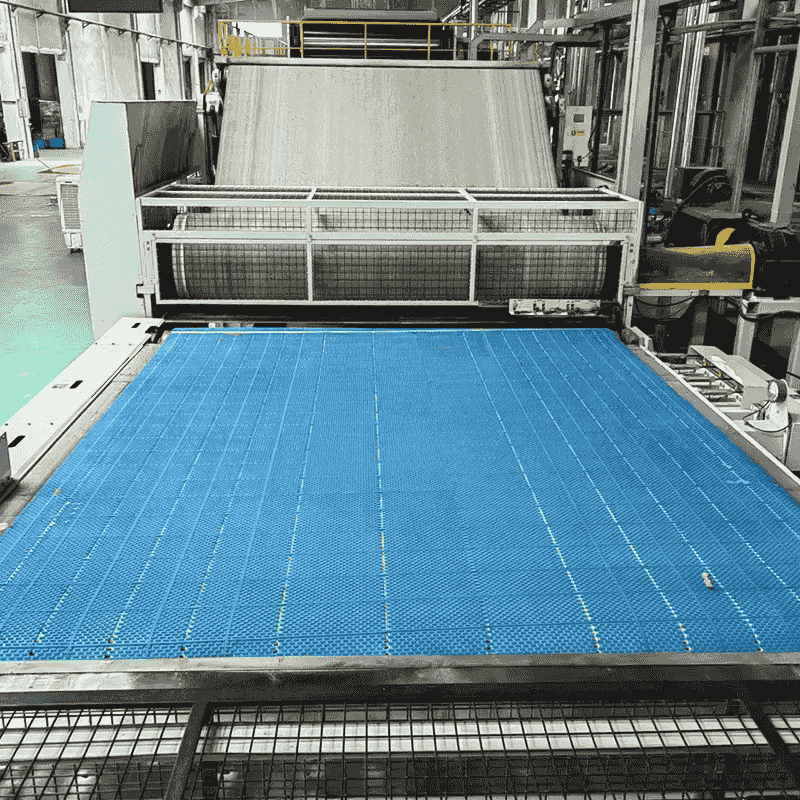In the dynamic world of industrial logistics and material handling, the choice of conveyor system can significantly impact efficiency, safety, and overall operational success. Two prominent types of conveyors that have garnered attention are the vacuum conveyor belt and the traditional conveyor belt. Understanding the key differences between these two systems is crucial for making informed decisions in various industrial settings.
Traditional conveyor belts, often referred to as goods conveyor belts, have been a staple in material handling for decades. These systems are designed to transport a wide range of materials, from small packages to heavy industrial components. The goods conveyor belt operates on a straightforward principle: a continuous loop of material, typically made from rubber or synthetic fabric, moves along a set path, driven by rollers or pulleys. This simple yet effective design has made traditional conveyors a popular choice in factories, warehouses, and distribution centers worldwide.

One of the primary advantages of traditional conveyor belts is their versatility. They can be easily customized to fit various applications and environments. Whether it's a heavy conveyor belt designed to carry large, bulky items or a lightweight belt for small packages, traditional conveyors can be tailored to meet specific needs. This adaptability makes them suitable for a wide range of industries, from manufacturing and mining to food processing and logistics.
However, traditional conveyor belts also come with certain limitations. One of significant challenges is the potential for material spillage and contamination. When transporting loose materials such as powders, grains, or small particles, traditional conveyors can experience spillage, cause loss of product and potential contamination of the surrounding environment. This issue is particularly problematic in industries where cleanliness and hygiene are critical, such as pharmaceuticals and food processing.
Enter the vacuum conveyor belt, a more advanced and specialized system designed to address some of the shortcomings of traditional conveyors. The vacuum conveyor belt operates on a unique principle: it uses a vacuum to create suction, pulling materials along the conveyor belt. This method ensures that materials are securely held in place, minimizing the risk of spillage and contamination. The vacuum conveyor belt is particularly effective for handling fine powders, granules, and other loose materials that are prone to scattering.
One of the key benefits of the vacuum conveyor belt is its ability to maintain a clean and controlled environment. By using a vacuum to transport materials, the system prevents dust and particles from escaping into the air. This is especially important in industries such as pharmaceuticals, where even the slightest contamination can have serious consequences. The vacuum conveyor belt's enclosed design also helps to protect the materials from external factors, ensuring that they remain uncontaminated throughout the transportation process.
Another advantage of the vacuum conveyor belt is its efficiency in handling delicate materials. Traditional conveyor belts, especially heavy conveyor belts, can sometimes cause damage to fragile items due to the friction and impact forces involved in the transportation process. In contrast, the vacuum conveyor belt provides a gentle and controlled movement, reducing the risk of damage to sensitive materials. This makes it an ideal choice for industries such as electronics and glass manufacturing, where the integrity of the product is paramount.
In terms of maintenance, the vacuum conveyor belt also offers some distinct advantages. While traditional conveyor belts require regular inspection and replacement of worn - out components, the vacuum conveyor belt's enclosed design reduces the exposure of its internal parts to dust and debris. This results in fewer maintenance issues and longer - lasting components, ultimately reducing downtime and maintenance costs.
However, it's important to note that vacuum conveyor belts are not without their challenges. One of the primary drawbacks is their initial cost. The technology and components required to create a vacuum - powered conveyor system are more complex and expensive than those of traditional conveyors. This higher upfront investment can be a barrier for some businesses, especially those with tight budgets.
Vacuum conveyor belts require a reliable source of vacuum power, which can be a limiting factor in some industrial settings. The system's performance is directly tied to the efficiency of its vacuum pump, and any issues with the pump can cause reduced performance or even system failure. Therefore, it's crucial for businesses to ensure that they have a robust and reliable vacuum supply when considering a vacuum conveyor belt.

 English
English  Español
Español  Português
Português  عربى
عربى 




